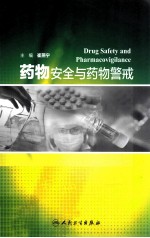

药物安全与药物警戒PDF电子书下载
- 电子书积分:9 积分如何计算积分?
- 作 者:崔燕宁主编;夏峰,莫京平副主编
- 出 版 社:北京:人民卫生出版社
- 出版年份:2014
- ISBN:9787117183208
- 页数:193 页
第一章 绪论(Introduction) 1
第一节 概论(Overview) 1
一、药物安全与警戒学科(The Science of Drug Safety and Pharmacovigilance) 1
二、药物安全与警戒的必要性(The Necessity ofDrug Safety and Pharmacovigilance) 3
三、药物安全与警戒的责任(The Responsibility of Drug Safety and Pharmacovigilance) 4
第二节 西方医药史上的药物安全与药物警戒(Drug Safety and Pharmacovigilance in the History ofWestern Medicine) 6
一、认识过程(The Process ofUnderstanding) 6
二、历史上的重大事件与法令(ImportantEventsand LawsintheHistory) 7
第三节 展望(Drug Safety and Pharmacovigilance-Future Prospects) 12
小结(Summary) 14
第二章 法律、法规与指导文件(Law,Regulation and Guidance) 16
第一节 美国食品药品管理局有关的法律、法规与指导文件(Law,Regulation and Guidance of the US Food and Drug Administration) 16
一、法律(Law) 16
二、法规(Regulation) 29
三、指导文件(Guidance) 32
第二节 欧洲药品管理局有关的法律、法规与指导文件(Law,Regulation,and Guidance ofEuropean Medicines Agency) 34
一、相关概念(Concept) 35
二、欧盟最新药物警戒立法(EU New Pharmacovigilance Legislation) 36
小结(Summary) 43
第三章 药物不良事件个例的报告、评估及有效管理的意义[Individual Case Safety Reports(ICSRs):Adverse Event Reporting,Evaluation,Value ofEffective Management ] 45
第一节 概述(Overview) 45
第二节 药物不良事件个例报告的来源(Sources of Adverse Event Reports) 46
第三节 药物不良事件个例报告的基本要素(Basic Criteria of ICSRs) 48
第四节 药物不良事件个例安全报告中的严重性判断(Seriousness Assessment in ICSRs) 49
第五节 药物不良事件个例安全报告中不良事件的选择(Event Term Selection ofICSRs) 50
第六节 关于药物和不良事件的标准化编码(Drug and Event Standardized Coding) 51
第七节 对不良事件的预期判断(Expectedness Assessment of Adverse Event) 53
第八节 对不良事件的因果关系判断(Causality Assessment ofAdverse Event) 56
一、Bradford-Hill法则(Bradford-Hill Criteria) 56
二、药物安全领域中的因果关系判断(Causality Assessment in Drug Safety) 57
第九节 药物不良事件报告的流程、时间性要求和报告方法 (Adverse Event Reporting:Workflow,Timeline and Methods) 62
一、ICSR的处理流程(ICSR Workflow) 62
二、时间性要求(Timeline) 62
三、报告方法(Methods) 63
第十节 严重、非预期的不良反应(Suspected Unexpected Serious Adverse Reaction,SUSAR) 63
第十一节 其他需要注意的情况(Other Situations) 65
一、指定医学事件/目标医学事件/特殊兴趣不良事件(DesignatedMedical Event/Targeted Medical Event/Event ofSpecial Interest) 65
二、Narrative的撰写(Narrative Writing) 66
三、申办方或公司的临床评估(Clinical Evaluation by Sponsor or Company) 66
四、跟踪随访和查询(Follow-up and Query) 66
五、减少重复报告(Reducing Duplicate Reports) 67
六、消费者vs医学确认报告(ConsumervsMedically Confirmed Reports) 67
七、与合作伙伴间的ICSR数据交换(ICSR Data Exchange between Licensing Partner) 67
小结(Summary) 68
第四章 安全风险管理的概念、监管法规、策略、行动和评估(The Concepts,Regulations,Strategy,Actions and Evaluation of Risk Management) 71
第一节 风险管理的监管(Risk Management Regulation) 71
一、欧洲风险管理计划(European Risk Management Plan,EU-RMP) 74
二、美国风险评估与减低策略(Risk Evaluation and Mitigation Strategy,REMS) 75
第二节 风险管理的生命周期与策略(The Risk Management Lifecycle and Strategy) 78
一、风险管理的生命周期(The Risk Management Lifecycle) 78
二、制定风险管理策略(Risk Management Strategy Development) 79
第三节 安全工具(措施)和风险管理活动(SafetyTools and Risk Management Activities) 81
一、风险最小化(Risk Minimization) 81
二、风险最小化策略——利益相关者(Risk Minimization Strategy-Stakeholders) 83
三、风险沟通(Risk Communication) 84
第四节 风险管理活动的实施与评估(Implementation and Evaluation of Risk Management Activities) 85
小结(Summary) 86
第五章 药物上市前的安全风险管理(Drug Safety and Risk Management in Premarketing) 88
第一节 临床前试验(Preclinical Studies) 88
一、临床前试验的目的(The Purpose ofPreclinical Studies) 88
二、药物首次用于人体前需做的动物实验(Animal Studies Needed to Be Done before the Drug Is First Used in Human) 89
三、Ⅱ、Ⅲ期临床试验前所需做的动物实验(AnimalStudiesNeededtoBe Done before Phase Ⅱ and Phase Ⅲ Clinical Trials) 90
四、临床试验期间动物实验中非预期的严重不良反应的上报[The Reporting of Non-clinical Suspected Unexpected Serious Adverse Reactions(SUSARs)during Clinical Trials] 90
第二节 临床试验阶段(Clinical Trials) 90
一、知情同意书(Informed Consent) 91
二、临床试验方案的制定、审阅和批准(The Protocol's Initiation,Review and Approval) 92
三、临床试验各期(Clinical Trials:Phase Ⅰ-Ⅳ) 93
第三节 研究者手册、研发新药申请年度报告和研发新药安全性更新报告(Investigator's Brochure,Investigational New Drug Application Annual Report and Development Safety Update Report) 98
一、研究者手册(Investigator's Brochure,IB) 98
二、研发新药申请年度报告(Investigational New Drug Application Annual Report,IND AR) 99
三、研发新药安全性更新报告(DevelopmentSafetyUpdateReport,DSUR) 99
第四节 定期与监管部门的汇报、交流与沟通(Communication with Regulatory Authority Periodically) 101
一、美国联邦法规法典(The Code ofFederal Regulations,CFR)的规定 101
二、FDA指导文件的要求(FDA's Guidance in 2009) 102
三、会议内容的准备及与监管部门的有效交流(Preparation for the Meeting and Effective Communication with Regulatory Authority) 103
小结(Summary) 105
第六章 新药上市后的安全监管(Postmarketing Drug Safety and Pharmacovigilance) 107
第一节 新药上市后药物安全监管的必要性和重要性(Drug Safety and Pharmacovigilance Activities after Drug Approval:The Necessity and Importance) 107
一、新药上市后收集新的安全资料的必要性(The Necessity to Collect New SafetyData afterDrugApproval) 107
二、新的安全信息对药品说明书及其他文件的及时更新(The Update ofDrug LabelandOtherDocumentswithNewSafetyInformation) 108
第二节 新药上市后药物安全监管的手段(Means of Drug Safety and Pharmacovigilance Regulation after Drug Approval) 109
一、自发报告系统(Spontaneous ReportingSystem) 109
二、新药批准后的承诺(Postapproval Commitments) 110
三、新药申请周期性报告和定期安全性更新报告(NDA Periodic Report and Periodic Safety Update Report) 112
第三节 新药上市后药品安全监管的其他途径(Other Pharmacovigilance Activities after Drug Approval) 114
一、哨兵倡议(The SentinelInitiativeintheUS) 114
二、观测医药成果合作伙伴(The Observational Medical Outcomes Partnership,OMOP) 115
小结(Summary) 116
第七章 特殊人群的药物安全管理(Drug Safety Management in Special Populations) 118
第一节 儿童的药物安全管理(Drug Safety Management in Children) 118
一、儿童的定义和生理特征(DefinitionandPhysiologicalCharacteristics) 118
二、监管部门的要求(Requirements from Regulatory Authority) 118
三、风险管理的具体措施(Specific Methods ofRisk Management) 120
第二节 老年人的药物安全管理(Drug Safety Management in the Elderly) 121
一、老年人的定义和生理特征(Definition and Physiological Characteristics) 122
二、监管部门的要求(Requirements from Regulatory Authority) 122
三、风险管理的具体措施(SpecificMethods ofRiskManagement) 123
第三节 孕妇的药物安全管理(Drug Safety Management in Pregnancy) 124
一、孕期阶段的划分和生理特征(Preguancy Stage and Physiological Characteristics) 125
二、监管部门的要求(RequirementsfromRegulatoryAuthority) 126
三、风险管理的具体措施(Specific Methods ofRisk Management) 126
小结(Summary) 128
第八章 药物流行病学在风险管理中的作用(The Role of Pharmacoepidemiology in Risk Management) 130
第一节 概述(Overview) 130
第二节 监管部门与制药企业对风险管理与药物流行病学日趋重视(Regulatory and Industry Focus on Risk Management and Pharmacoepidemiology) 131
第三节 药物流行病学简介(Introduction to Pharmacoepidemiology) 132
一、药物流行病学的定义(Definition ofPharmacoepidemiology) 132
二、科学研究方法概述(Overview ofScientificResearchMethod) 132
三、药物流行病学研究设计(Pharmacoepidemiologic Study Designs) 134
四、药物流行病学研究数据来源(Data Sources for Pharmacoepidemiology Studies) 137
第四节 药物流行病学在药物安全评估的应用(Epidemiology in Drug Safety Evaluation) 138
一、上市前药物流行病学的贡献(Contribution of Preapproval Pharmacoepidemiology) 138
二、上市后药物流行病学的贡献(Contribution of Postapproval Pharmacoepidemiology) 139
三、药物流行病学应用于特殊人群药物安全评估(Applying Pharmacoepidemiology to Drug Safety Evaluation in Special Populations) 141
第五节 药物流行病学在评价风险减低策略中的作用(Pharmacoepi-demiology in Evaluation of Risk Mitigation Strategies) 144
第六节 药物流行病学展望(The Future of Pharmacoepidemiology) 145
小结(Summary) 146
第九章 药物安全警戒中的信号检测(Signal Detection in Pharmacovigilance) 150
第一节 药物安全警戒的定义(Definition ofPharmacovigilance) 150
第二节 信号的定义(Definition ofSignal) 151
第三节 信号检测的独特性和挑战性(The Unique Challenges ofSignal Detection) 151
第四节 信号检测:职责和资料来源(Signal Detection:Who and Where) 153
第五节 自发报告系统数据库中的信号检测(Signal Detection in Spontaneous Reporting Safety Database) 156
第六节 个例案例评估中的信号检测(Signal Detection from Individual Case Review) 157
第七节 定量方法(Quantitative Methods) 158
第八节 整合分析(Putting it All Together) 164
小结(Summary) 165
第十章 全球共识组织及其对药物警戒的贡献(Global Consensus Organizations and Their Contributions to Pharmacovigilance) 167
第一节 概述(Overview) 167
一、标准的重要性(Importance ofStandards) 167
二、全球共识组织(Global Consensus Organizations) 168
三、从共识到药物警戒标准的过程(The Pathway from Consensus to Pharmacovigilance Standards) 168
第二节 国际医学科学组织理事会(国际医学科学委员会)(the Council for International Organizations of Medical Sciences,CIOMS) 170
一、背景(Background) 170
二、工作方式(Ways ofWorking) 171
三、CIOMS工作成果举例(Examples of Work Products) 171
第三节 国际人用药物注册技术标准协调会议(The International Conference on Harmonization of Technical Requirements for Registration ofPharmaceuticals for Human Use,ICH) 174
一、背景(Background) 174
二、工作方式(Ways ofWorking) 176
三、国际协调会议工作成果举例(Examples ofICH Work Products) 177
第四节 标准开发组织(Standards Development Organization,SDO) 178
一、背景(Background) 178
二、机构简介(Introduction ofIndividualOrganization) 178
第五节 药物警戒标准(Standards in Pharrnacovigilance) 181
一、药品上市前(Premarketing) 182
二、药品上市后(Postmarketing) 182
小结(Summary) 182
第十一章 药业视察(Pharmaceutical Inspections) 185
第一节 概述(Overview) 185
第二节 药业视察的类型(Types ofPharmaceutical Inspections) 185
一、药品生产质量管理规范(GoodManufacturingPractice,GMP) 186
二、药物非临床研究质量管理规范(Good Laboratory Practice,GLP) 186
三、药物临床试验质量管理规范(Good Clinical Practice,GCP) 186
四、药物警戒管理规范(GoodPharmacovigilancePractice,GVP) 186
第三节 药业视察的时间、频率和结果报告(Timing and Frequency of Pharmaceutical Inspections and Inspection Outcome) 187
一、药业视察的时间、频率(Timing and Frequency of Pharmaceutical Inspections) 187
二、视察结果报告(Inspection Outcome) 187
第四节 药业视察的准备及关键考量(Inspection Preparation and Key Points to Consider for an Inspection) 188
小结(Summary) 188
词汇表(Glossary) 190
- 《天然药物化学》孔令义主编 2019
- 《药物分析》贡济宇主编 2017
- 《药物合成反应》姚其正主编 2019
- 《动物抗菌药物与细菌耐药性》王桂琴主编 2019
- 《药物分析》童珊珊,余江南 2019
- 《天然药物化学实验教程》胡芳弟 2016
- 《新编临床药物使用规范》孙国栋,解华主编 2017
- 《企业高技能人才职业培训系列教材 药物制剂工 三级》人力资源和社会保障部教材办公室 2016
- 《全国高等医药院校药学类实验教材 药物合成反应实验 第3版》翟鑫 2019
- 《全国高等院校药学类专业“十三五”规划实验教材 校企合作示范教材 天然药物化学实验教程》张羽男,王存琴 2019
- 《指向核心素养 北京十一学校名师教学设计 英语 七年级 上 配人教版》周志英总主编 2019
- 《办好人民满意的教育 全国教育满意度调查报告》(中国)中国教育科学研究院 2019
- 《北京生态环境保护》《北京环境保护丛书》编委会编著 2018
- 《人民院士》吴娜著 2019
- 《民国时期医药卫生文献集成 37》路丽明编 2019
- 《指向核心素养 北京十一学校名师教学设计 英语 九年级 上 配人教版》周志英总主编 2019
- 《民国时期医药卫生文献集成 19》路丽明编 2019
- 《中国人民的心》杨朔著;夕琳编 2019
- 《民国时期医药卫生文献集成 24》路丽明编 2019
- 《基层医疗卫生机构安全用药手册》黎月玲,熊慧瑜 2019
